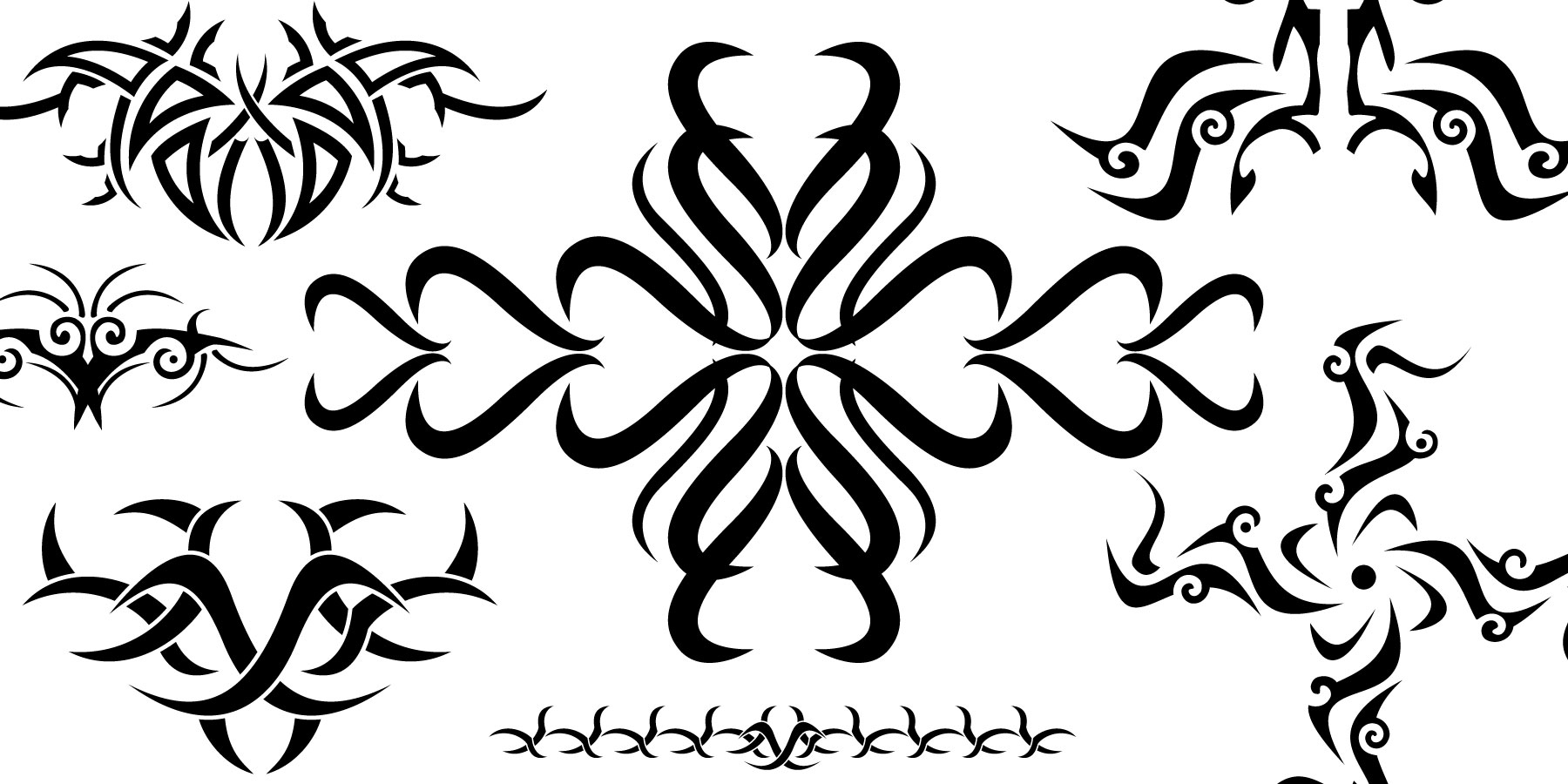Vector graphics are images that can be resized without any loss of quality. Best for printing and high-res display. Download 41,719 star free vectors. Choose from over a million free vectors, clipart graphics, vector art images, design templates, and illustrations created by artists worldwide! A number of vector graphics editors exist for various platforms. Potential users of these editors will make a comparison of vector graphics editors based on factors such as the availability for the user's platform, the software license, the feature set, the merits of the user interface (UI) and the focus of the program. Some programs are more suitable for artistic work while others are better. So we've opened the EPS or the AI file in Photoshop. Let’s begin using it right away and learn as we go. How to use Vector Files in Photoshop. First, let’s look at the two images that has been opened. This is how the images appear in the layer panel for both files – one with the normal image layer and the other as a smart object.

Is an EPS file, a vector file?
Not necessarily. An eps file may contain raster, vector, or both. Some suppliers when requesting simply for an 'eps file' may really be asking for a 100% vector eps file, and this should be clarified since many non-vector programs can also save as eps.
EPS stands for Encapsulated PostScript. EPS is a graphic file format that describes an image (raster/bitmap) or a drawing (vector) or both. It is a standard file format for importing and exporting PostScript files. See raster vs vector
True vector graphics are created with vector tools. Even a file created with a vector program may not be 100% vector. If you create a file using a vector program but you import, place, or paste a raster (bitmap) element - like a photograph - into your vector file, you then end up with a file that has both vector and raster elements. Also, some of the effects within vector programs like gradients and shadows are actually raster effects. When a company requests for 100% vector art that means you cannot have any raster elements in your vector file. All elements within the vector file need to be created using the tools of the vector program (like the pen tool); no placed, imported, or pasted bitmap elements allowed and no raster effects. Raster vs Vector
Some of the processes that must have 100% vector art are sign vinyl-cutting and engraving. The equipment these processes use must follow the vector outline/wireframe.
Here at Vector Conversions supply you with 100% vector art unless requested otherwise.
Which programs are vector programs?
The 2D graphic design vector programs I am familiar with are Adobe Illustrator, CorelDraw, and Inkscape (free) but there are other vector programs available . Engineering drafting programs like Auto-Cad are also vector programs. We use Adobe illustrator but can also supply you with CorelDraw file format.
*Although Photoshop can include some vector data its specialty is pixel editing, not vector editing.

InDesigncan import a wide range of graphics file formats. Consult with the serviceproviders who will help you produce your document to clarify which formatsto use. You can then plan your document around those formats andthe options that best apply to your project.
The following table summarizes what graphics formats would workbest for the kind of document you’re designing.
Final output | Graphics type | Format |
|---|---|---|
High resolution (>1000dpi) | Vector drawings | Illustrator, EPS, PDF |
Bitmap images | Photoshop, TIFF, EPS, PDF | |
Process-color separations | Vector drawings | Illustrator, EPS, PDF |
Color bitmap images | Photoshop, CMYK TIFF, DCS, EPS, PDF | |
Color-managed graphics | Illustrator, Photoshop, RGB TIFF, RGB EPS,PDF | |
Low-resolution printing, or PDF for onlineviewing | All | Any (BMP images only) |
Web | All | Any (InDesign converts graphics to JPEGand GIF when exporting to HTML) |
Vectorgraphics (sometimes called vector shapes or vectorobjects) are made up of lines and curves definedby mathematical objects called vectors, which describe animage according to its geometric characteristics.
You can freely move or modify vector graphics without losingdetail or clarity, because they are resolution-independent—theymaintain crisp edges when resized, printed to a PostScript printer,saved in a PDF file, or imported into a vector-based graphics application.As a result, vector graphics are the best choice for artwork, suchas logos, that will be used at various sizes and in various output media.
The vector objects you create using the drawing and shape toolsin Adobe Creative Suite are examples of vectorgraphics. You can use the Copy and Paste commands to duplicate vectorgraphics betweenCreative Suite components.
Vector Graphics Eps Converter
Bitmapimages—technically called raster images—use a rectangulargrid of picture elements (pixels) to represent images. Each pixelis assigned a specific location and color value. When working withbitmap images, you edit pixels rather than objects or shapes. Bitmapimages are the most common electronic medium for continuous-toneimages, such as photographs or digital paintings, because they canmore efficiently represent subtle gradations of shades and color.
Bitmap images are resolution-dependent—that is, they containa fixed number of pixels. As a result, they can lose detail andappear jagged if they are scaled to high magnifications on‑screenor if they are printed at a lower resolution than they were createdfor.
Bitmap images sometimes require large amounts of storage space,and often need to be compressed to keep file sizes down when usedin certain Creative Suite components. Forinstance, you compress an image file in its original applicationbefore you import it into a layout.
Note:
In Adobe Illustrator, you can create bitmap effects in yourartwork using effects and graphic styles.
Bitmap images contain a fixed number of pixels,usually measured in pixels per inch (ppi). An image with a highresolution contains more, and therefore smaller, pixels than animage of the same printed dimensions with a low resolution. For example,a 1‑inch‑by‑1‑inch image with a resolution of 72 ppicontains a total of 5184 pixels (72 pixels wide x 72 pixels high= 5184). The same 1‑inch‑by‑1‑inch image with a resolution of 300 ppiwould contain a total of 90,000 pixels.
For imported bitmapimages, image resolution is determined by the source file. For bitmapeffects, you can specify a custom resolution. To determine the image resolutionto use, consider the medium of final distribution for the image.The following guidelines can help you determine your requirementsfor image resolution:
Commercialprinting requires 150 to 300 ppi (or more) images, dependingon the press (dpi) and screen frequency (lpi) you’re using; alwaysconsult your prepress service provider before making production decisions.Because commercial printing requires large, high-resolution images, whichtake more time to display while you’re working with them, you maywant to use low-resolution versions for layout and then replacethem with high-resolution versions at print time.
In Illustratorand InDesign, you can work with low resolution versions by using theLinks panel. In InDesign you can choose either Typical or Fast Displayfrom the View > Display Performance menu; in Illustratoryou can choose View > Outline. Alternatively, if yourservice provider supports Open Prepress Interface (OPI), they mayprovide low-resolution images to you.
Eps Vector Editor
Desktop printing usually requires images within the rangeof 72 ppi (for photographs printed on a 300 ppi printer)to 150 ppi (for photographs printed on devices up to 1000 ppi).For line art (1‑bit images), make sure that the resolution of yourgraphics matches the resolution of the printer.
Becauseonline publishing generally requires images with pixel dimensionsthat fit the intended monitor, the images are usually less than 500pixels wide and 400 pixels tall, to leave room for browser windowcontrols or such layout elements as captions. Creating an originalimage at screen resolution—96 ppi for Windows–based images,and 72 ppi for Mac OS–based images—lets you seethe image as it will likely appear when viewed from a typical webbrowser. When you’re publishing online, the only times you’re likely toneed resolutions above those ranges are when you want viewers tobe able to zoom in for more detail in a PDF document, or when you’reproducing a document for printing on demand.
